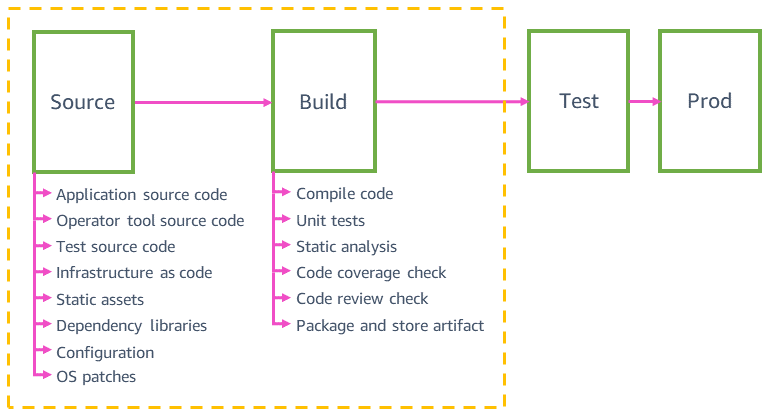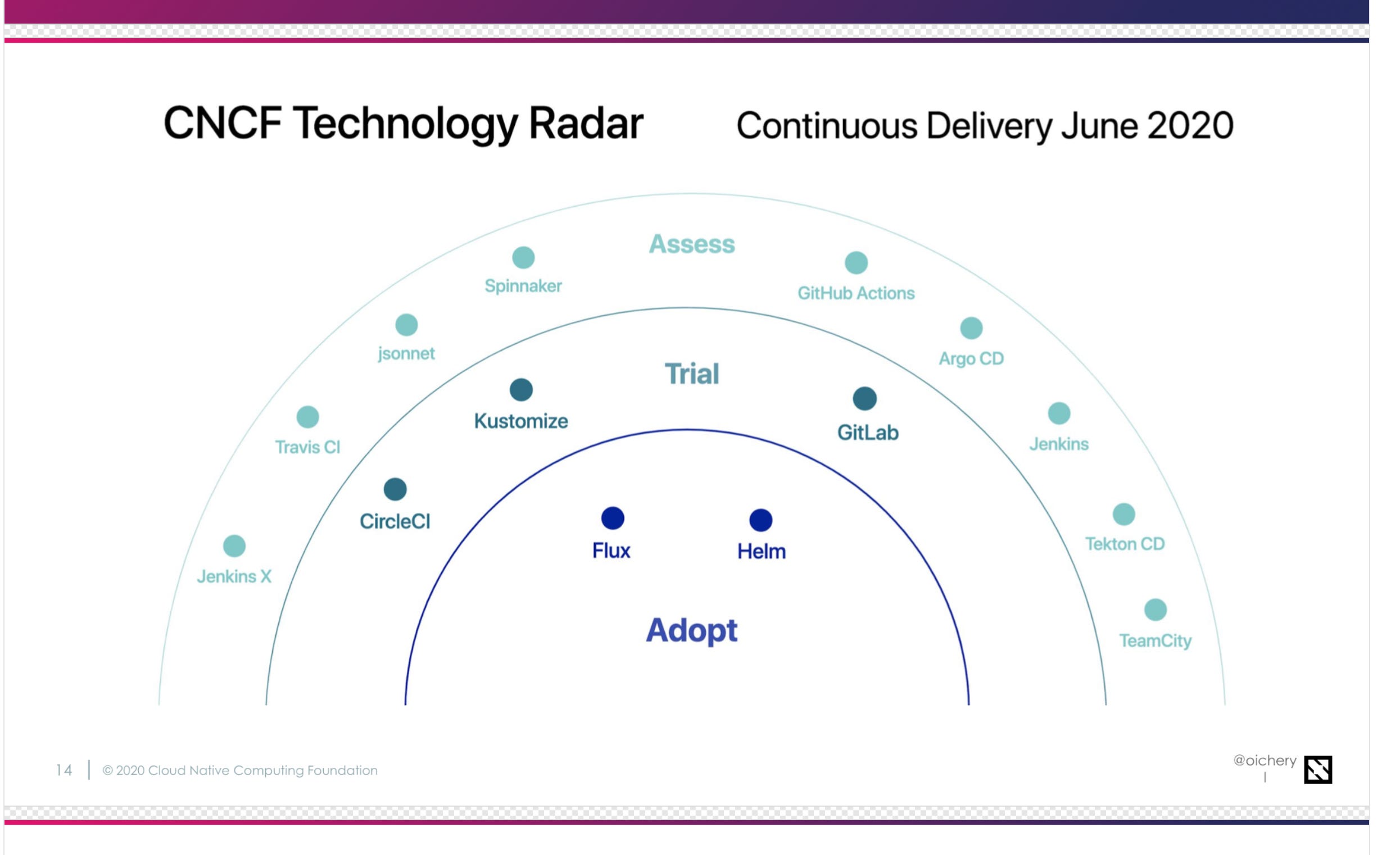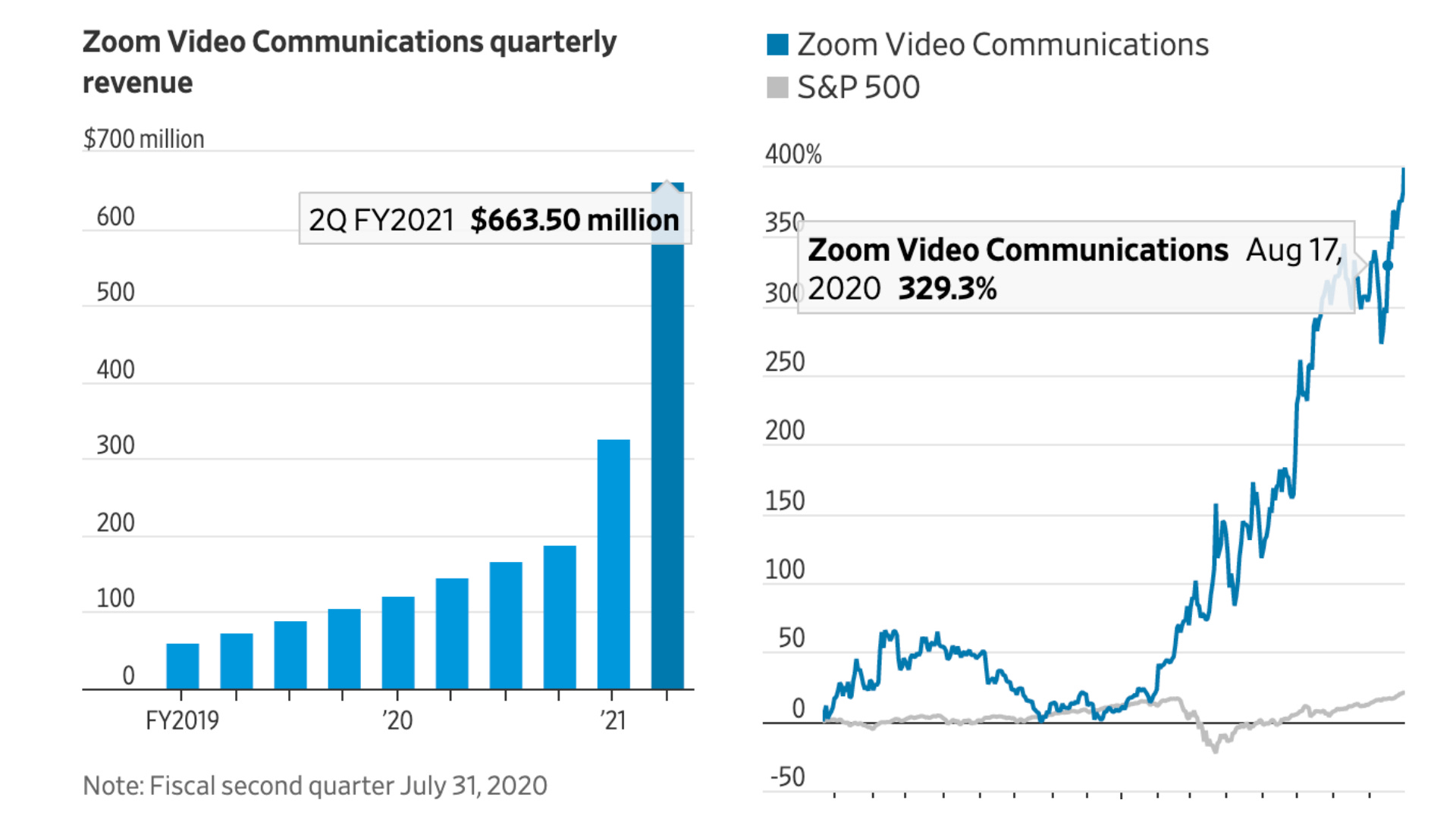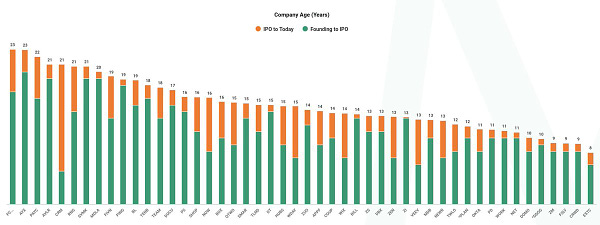I can’t believe it’s September already! Where did the last 6 months go? While much of the talk early in the week was on Zoom’s 👀popping numbers, the tenor quickly changed as tech stocks got hammered due to super high expectations along with some Softbank trading (see below). That being said, I’m less interested in the weekly or monthly gyrations of the stock market and more focused on secular trends in enterprise tech with one of the biggest being the importance of the developer in enterprises and the rise of open source software.
With that, I wanted to dive into MongoDB as a beacon for open source software startups. They beat their Q2 earnings this week with $138.3mm of Q2 Revenue, 39% ⬆️ YoY, but more importantly, Atlas, their hosted version of their open source software grew 66% and represents 44% of overall revenue! Keep in mind that Atlas was launched just 4 years ago in June 2016 and now represents almost half of all MongoDB revenue!
So if you’re wondering how to monetize OSS software, what started as the services model with Red Hat and JBoss and then moved to open core (free but also enterprise versions) has evolved into the hosted OSS version a la Gitlab, MongoDB, and many more which is a hybrid of open core with the benefits of SaaS. Eliot Horowitz, founder of MongoDB explains further in his 2016 post:
Today we're announcing MongoDB Atlas, the simplest, most robust, and most cost effective way to run MongoDB in the Cloud. Atlas is a database as a service that makes running MongoDB almost effortless, whether you run a single replica set, or a sharded cluster hosting a hundred terabytes.
Developers want simplicity as well.
Using Atlas is simplicity itself. There are no servers to set up, configure, or manage, no backups to schedule, no need to set up monitoring or look for security vulnerabilities. If a server goes down in the night, the system takes care of it for you. And if something cannot be fixed automatically, our 24/7 response team is paged, not you. When you need to add more storage, run on bigger hardware, or add more shards, it's a few clicks in the UI, and Atlas takes care of the rest.
And from this quarter’s earnings transcript, Dev Ittycheria says:
Every business is quickly becoming a software business, which means the value proposition of any business is increasingly enabled, delivered, or defined by software. Consequently, a key unit of productivity of a business becomes a developer, as developers create enhanced applications that lead to a competitive advantage.
Our mission continues to make it stunningly easy for software developers to work with data, wherever it resides, to drive innovation and create value.
So thank you to MongoDB for showing the world that the SaaS model for OSS can be massive and for reminding us of your product north 🌠, focus on the developer and make their lives better and you can build a massive business! Win the ❤️ + 🧠 of developers and win the enterprise.
Thanks again for reading and have a wonderful, socially distanced Labor Day weekend! As always, if you enjoyed this, please share with your friends and colleagues.
Scaling Startups
👇🏼💯 - often forgotten, start with the user, not the company - also don’t rush - need to get those first users insanely happy and coming back repeatedly, turning your product into a must-have before expanding too fast
👇🏼💯 also beauty of enterprise software for second time founders as the customer relationships you build today will help you launch faster in the future
Great thread on value of high quality onboarding - IMO, one addition is that proper bespoke onboarding will significantly reduce churn over time and key, of course, is to automate more and more of this but still reserve that special magic…
Power of leverage
Why do folks ❤️ Roam Research for notes? Watch Kyle Harrison from Coatue give a Roam Tour on loom
Enterprise Tech
To open source or not and a framework for which features are free or paid - from Moritz Plassnig Founder of CodeShip (acq. by Cloudbees) 🎩 @shomikghosh21
If the user/beneficiary of a feature is the developer, it should always go into open source. The better your open source project is, the more adoption you will see. In case there are multiple, competitive projects in a given problem space, it will also help you differentiate and win[4]. All of that results in a larger addressable market for you. As an open source vendor, you are constrained by the adoption of your open source project. Assuming you hold back those developer features, and try to monetize them, you will not generate a lot of revenue. The money is somewhere else (manager, executive). If you want to monetize the developer adoption, offer a SaaS product.
The obvious one is the monetization potential of a given capability. Executives can spend more money ($$$), than managers ($$), who can spend more than practitioners ($). You lose very little by not monetizing the persona with the least monetization potential. In return, you are more likely to get a lot of bottom-up adoption, making selling to executives/managers easier. Additionally, offering a SaaS product allows you to monetize the practitioner segment at least partially.
“Do Developers Really Care About Open Source” from Matt Asay. At the ❤️ of his exploration is do devs really want open source or are APIs or cloud hosted versions good enough. Gaurav Gupta from Lightspeed shares the balance between cloud and OSS love.
“Ultimately people want to consume things as a [cloud] service,” he suggests that code is critical for forging real affinity — even affection — for technology. “There is a deep amount of developer love and appreciation and almost like an addiction to [an open source] product that you develop by being able to feel it and understand it and be part of a community.”
Can you achieve this “cosmic closeness” with an API? Not really, Gupta argues. Communities, he says, are “a lot easier to build if you’re open source,” rather than a “black box cloud service with an API. People like Twilio, [but] do they love it?” He doesn’t answer his rhetorical question, but it seems to demand an unequivocal, “No!” Because, as Gupta goes on to suggest, “As a developer, you want to be part of a movement.”
Finally got to this article I saved from awhile back, and if you’re interested in how AWS automates, safe, hands-off deployments, read this from Clare Liguori. This will also give you a great overview of how some of the best companies go from application code to testing to production and where the variety of developer tools may fit during the CI/CD process.
With fully automated pipelines, developers use code reviews to check their code and also to approve that the change is ready to go to production. After the change is merged into the source code repository, the developer can move on to the next task and forget about the deployment, trusting the pipeline to get their change to production safely and cautiously. The automated pipeline takes care of deploying continuously to production multiple times a day, while balancing safety and speed. By modeling our continuous delivery practice in code, it’s easier than ever for AWS service teams to set up their pipelines to deploy their code changes automatically and safely.

CNCF Technology Radar - what are some of the most sophisticated developers using for tool in continuous delivery?

Future of Kubernetes according to Craig McLuckie, cofounder Kubernetes while at Google
"We’re seeing Kubernetes emerging not just as an infrastructure service abstraction, but as a dominant control plane for driving workloads, whether those workloads are running in Linux application containers or pretty much anywhere. And that’s an absolute delight.”
The downside is that “it’s a fancy system and it has some really sharp edges.” This brings us back to the goal of simplifying the developer experience. “Creating a comfortable environment that uses the power of the system, that doesn’t force them to deal with all these sharp tools that can cut them all the time, is very important,” said McLuckie.
“If we do our job right, I won’t be talking any more about Kubernetes in five years. I’m kind of tired talking about Kubernetes, I want to talk about what value can be built on top of it.”
Amen to simplifying the developer experience (Spectro Cloud) and what can be built on top (Replicated).
Why is Netflix always up and performing well for the most part? Their engineering team has been at the forefront of developing many of their own process and tools like Chaos Engineering to stay ahead of their peak loads. I always like to see what’s next for Netflix and this past week they unveiled Edgar, kind of like OpenTelemetry but better.
Edgar helps Netflix teams troubleshoot distributed systems efficiently with the help of a summarized presentation of request tracing, logs, analysis, and metadata.
In addition to trace data, Edgar pulls in additional context from logs, events, and metadata, sifting through them to determine valuable and relevant information, so that Edgar can visually highlight where an error occurred and provide detailed context.
Edgar provides a powerful and consumable user experience to both engineers and non-engineers alike.
The last part is key, focusing on a simple user experience for all stakeholders especially as the data volume increases exponentially.
What are the best developer-centric security products and why should folks care? And this Stephen O’Grady quote from RedMonk research is super important as it further supports comments from Dev at MongoDB about developer productivity being a new unit of success for enterprises.
Security is generally viewed as...unsexy work in a best case scenario and more likely to be both tedious and miserable. As enterprises have shifted more and more of their business to digitally based models, however, the importance of security from an application development perspective skyrockets.
Its importance notwithstanding, security is never going to be something that a majority of developers get excited about and want to spend cycles on. If a language is able to build in some security, however, if only to protect developers from some particular subset of vulnerabilities, that is an increasingly attractive feature – particularly if it doesn't require too many compromises.
Must Watch! Cobra Kai as the Karate Kid continues with Johnny (Mr. Sweep the Leg) and Daniel going at it decades later - predictable, cheesy, and I can’t stop watching it!
Markets
Softbank seen as the 🐳 that fueled the tech rally to FT and WSJ (quote below)
Regulatory filings show SoftBank bought nearly $4 billion of shares in tech giants such as Amazon.com Inc., Microsoft Corp. and Netflix Inc. this spring, plus a stake in Tesla. Not included in those disclosures is the massive options trade, which is built to pay off if the stock market rises to a certain level and then lock in gains, the people said.
SoftBank bought a roughly equal amount of call options tied to the underlying shares it bought, as well as on other names, according to people familiar with the matter. It also sold call options at far higher prices. This allows SoftBank to profit from a near-term run-up in stocks and then reap those profits by unloading its position to willing counterparties.
Investors pay a small premium to buy options, giving them exposure to a much larger notional amount of shares. In SoftBank’s case, the roughly $4 billion in options generated an exposure of around $50 billion, according to the people familiar with the matter.
Zoom 📈😮 - Revenue up from $145.8m to 663.5m YoY in revenue (more from WSJ)

Enterprise companies take time to build, mature, and scale - click through but 8 years to 20+ years from founding to IPO
To IPO or not to IPO, that is the ❓. I finally got a chance to read both Bill Gurley’s post about why SPACs or direct listings are a better choice vs. a traditional IPO and Scott Kupor’s (a16z) equally compelling piece in defense of the traditional IPO.
Here’s why Bill believes SPACs are a completely legitimate way to go.
The bottom line is that SPACs are a very legtimate path to the public markets. They have a lower cost of capital vs a traditional IPO. That cost of capital is falling due to market pressure, whereas it is rising for the IPO. The SPAC has fresh capital whereas the Direct Listing does not (yet), and the SPAC is clearly the fastest path to the public markets (which is a form of risk reduction). I fully expect to see high profile companies walk through Door #3.
And here is Scott’s view on when the traditional IPO makes the most sense.
An IPO, SPAC, or Direct Listing can each make sense in the right context for the right company, and each will hopefully improve. The handy rule of thumb is: if you need money, an IPO, for all its flaws, makes the most sense and is probably the best option; if you don’t, a Direct Listing may be preferable; if you need money, speed, and certainty, a SPAC may be best.
But hopefully everyone involved in the current IPO debate can agree that the best fundraise happens at the highest price the market will bear with the least dilution and lowest fees, not where 89 shares of stock trade 3 hours later. Focusing on aggregating the most demand, blurring the lines between private and public, decreasing fees, and eliminating anachronistic restrictions — that’s where founders thinking about being public, and capital markets innovators, should set their sights.
Finally Lise Buyer who helps companies go public (including Google) “bats back at the narrative that traditional IPOs are for morons”
“With Bill.com, management knew that demand dramatically outstripped supply and they could have priced that deal significantly higher,” she says. They didn’t raise their shares pricing because they didn’t want to “message anything unusual about Wall Street,” she continues, but also the company already had in mind its secondary stock sale. Indeed, in June, with Bill.com’s business accelerating and its shares ticking upward, management sold a much larger percentage of the company — at a much higher price.










